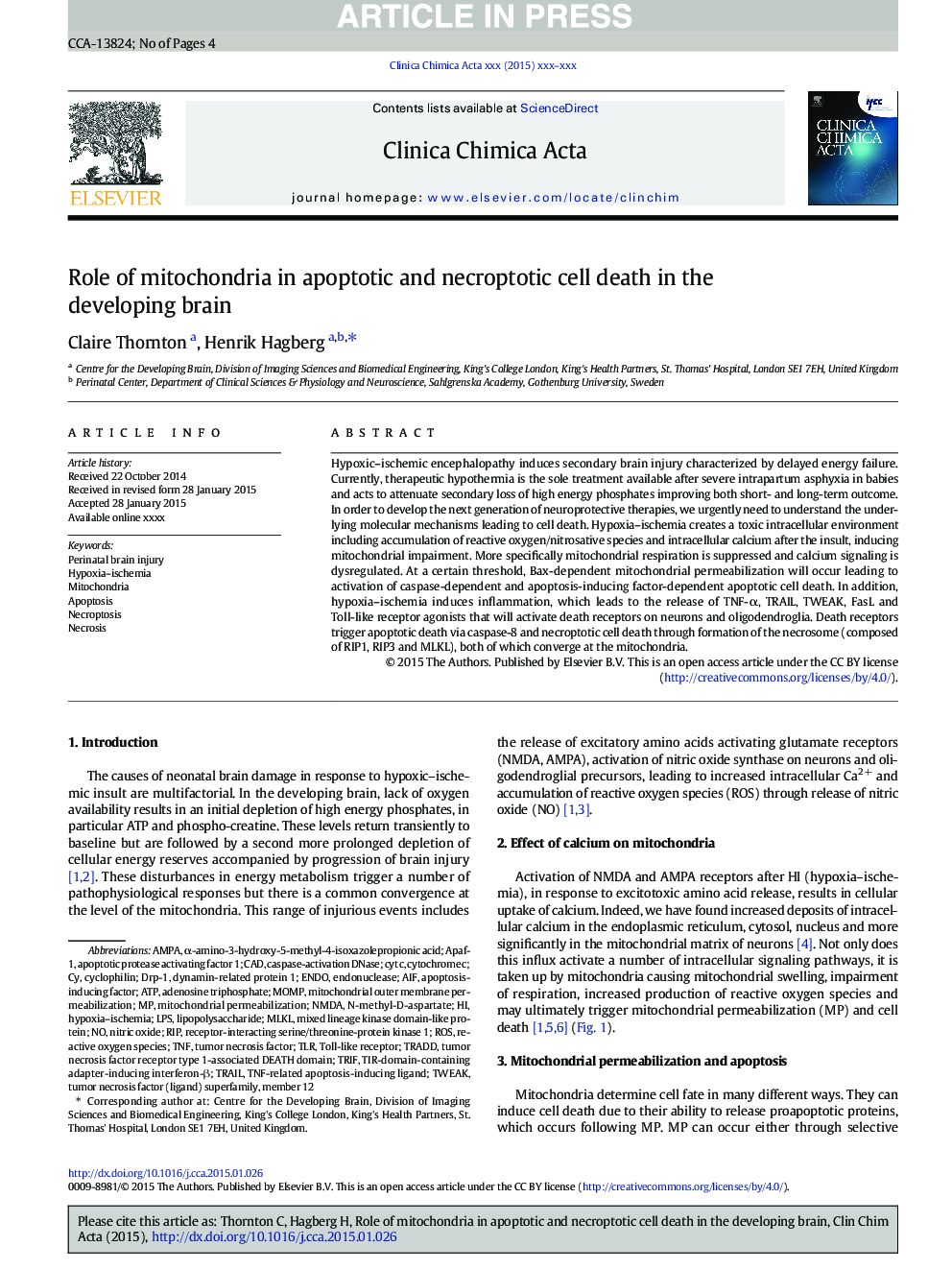| Article ID | Journal | Published Year | Pages | File Type |
|---|---|---|---|---|
| 10817278 | Clinica Chimica Acta | 2015 | 4 Pages |
Abstract
Hypoxic-ischemic encephalopathy induces secondary brain injury characterized by delayed energy failure. Currently, therapeutic hypothermia is the sole treatment available after severe intrapartum asphyxia in babies and acts to attenuate secondary loss of high energy phosphates improving both short- and long-term outcome. In order to develop the next generation of neuroprotective therapies, we urgently need to understand the underlying molecular mechanisms leading to cell death. Hypoxia-ischemia creates a toxic intracellular environment including accumulation of reactive oxygen/nitrosative species and intracellular calcium after the insult, inducing mitochondrial impairment. More specifically mitochondrial respiration is suppressed and calcium signaling is dysregulated. At a certain threshold, Bax-dependent mitochondrial permeabilization will occur leading to activation of caspase-dependent and apoptosis-inducing factor-dependent apoptotic cell death. In addition, hypoxia-ischemia induces inflammation, which leads to the release of TNF-α, TRAIL, TWEAK, FasL and Toll-like receptor agonists that will activate death receptors on neurons and oligodendroglia. Death receptors trigger apoptotic death via caspase-8 and necroptotic cell death through formation of the necrosome (composed of RIP1, RIP3 and MLKL), both of which converge at the mitochondria.
Keywords
TWEAKTLRN-methyl-d-aspartateNMDAAMPACyt CAPAf-1TRADDDrp-1MLKLLPSTNFmitochondrial outer membrane permeabilizationROSTRIFAdenosine TriphosphateATPperinatal brain injuryEndonucleaseAIFα-amino-3-hydroxy-5-methyl-4-isoxazolepropionic acidendoTIR-domain-containing adapter-inducing interferon-βToll-like receptorApoptosiscytochrome ccyclophilinCADapoptosis-inducing factorapoptotic protease activating factor 1tumor necrosis factorTRAILlipopolysaccharideTNF-related apoptosis-inducing ligandMOMPMitochondriaNecroptosisNecrosisNitric oxidehypoxia–ischemiaRIPdynamin-related protein 1mixed lineage kinase domain-like proteinReactive oxygen species
Related Topics
Life Sciences
Biochemistry, Genetics and Molecular Biology
Biochemistry
Authors
Claire Thornton, Henrik Hagberg,
